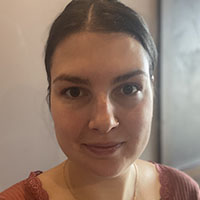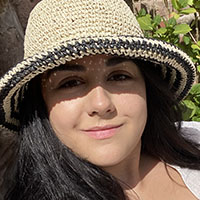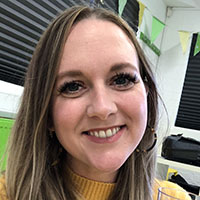Hello again from Cuenca, Ecuador, where we've been since January. We're at the end of our time here, so I'm starting to miss Cuena already. Last week we spent a chilly, rainy day at Cajas National Park and warmed up afterwards with mulled wine at a local inn. And at last I found the perfect Panama hat.
We aren't much for souvenirs, and I've never been a shopper, which is just as well since nomads have to travel light. However, the way we "nomad" (I'm verbifying that noun for convenience) includes a lot of daily walking, and for that, you need a hat.
You may be surprised to learn that Panama hats aren't from Panama - they're a heritage craft from Ecuador. It's an unfortunate misnaming situation with several possible explanations but no perfect answer.
Hat weaving was practiced and perfected by indigenous Ecuadorians hundreds of years ago. Before the arrival of Europeans, craftswomen were weaving hats from straw made from dried toquilla palms which grow exclusively in coastal and Andean regions of Ecuador. During the 1600s and 1700s, the hats became increasingly popular as a cottage industry but were largely unknown outside Ecuador. This changed in the 1830s with the arrival of Manual Alfaro, a Spaniard married to an Ecuadorian lady from Manabi.
Recognizing that trade in the hats could be lucrative, Senor Alfaro brought them to Panama for sale and export to the rest of the world. So they became known as Panama hats instead of by the name of the country which created them using local materials - Ecuador. In the early 20th century, hats were ubiquitous among laborers digging the Panama Canal under the hot sun, and this image likely helped cement the misnomer in the public mind.
Ecuador finally got its due respect in 2012 when Unesco named the traditional weaving of the Ecuadorian toquilla straw hat an "Intangible Heritage of Humanity." The name, however, is set.
The toquilla palm (another misnomer brought to us by Spanish conquistadors who had the naming advantage of written records) is also known in Ecuador as jipijapa palm, and they grow in the mountainous and humid Montecristi province. It takes two years for a toquilla palm to reach full size and be ready for harvest. In this region, jipijapa hats are worn daily by many locals.
The most expensive woven hats ("fine" and "ultrafine" quality) take months to create and cost hundreds or even thousands of dollars. Only the most expert and experienced weavers, primarily women, fashion these expensive hats with the finest strands of straw. Fashionable Europeans especially prize their high quality and timeless style.
Once a necessity to avoid exposure to the elements during open-air travel, wearing hats (and sunscreen!) has become important again the more we know about skin damage caused by prolonged sun exposure. According to a 2021 study by Brighton and Sussex Medical School in the medical journal Lancet, rates of malignant skin cancers have increased more than 550% in males and 250% in females since the early 1980s in England, which is not even a particularly sunny place. The American Cancer Society estimates that in the US in 2022, 7,650 deaths will be attributed to melanoma (skin cancer) - 5,080 men and 2,570 women. Exposure to UV light is the most preventable risk factor for skin cancer.
Although my husband and I travel outside the US almost all year, we never rent cars wherever we go. Instead, we run all our errands and see the sights via walking, taking public transportation (where available), and taking taxis (when necessary). We both have siblings who have experienced malignant melanomas, so we each travel with a hat and wear them routinely when we go out.
Coincidentally, we both have pretty big heads, which makes buying hats more complicated than you might expect. My husband has a straw fedora he ordered online from a company in Australia, where, understandably, there's a big market for sun protection. Unfortunately, finding women's hats in my size (US size 7 ½) is challenging. Women can look very dashing in men's hats, but I wanted a feminine hat.
I tried on hats in Mexico and Spain, where I finally found an inexpensive, crushable hat in tan and navy polyester. It shaded my face, an absolute necessity for sunny southern Spain, but the tan or navy got old fast.
When we left the States last January, I packed a straw visor with a 360 brim that fits around my head but leaves my crown exposed. High-elevation Cuenca has wonderful springlike temperatures year-round, but on sunny days, gringo skin burns quicker than you can say SPF 50. Most Cuencanos wear long-sleeved shirts and long pants, and even sweaters and jackets, every day, all year.
Upon learning that Jipijapa hats are a cultural heritage in Ecuador, I knew I'd find my hat in Cuenca. Boutiques with charming displays of hats call your name as you stroll the cobbled streets of Cuenca. It's a veritable candy store of straw hats.
One shop, La Paja Toquilla, on the corner of Calles Juan Jaramillo and Hermano Miguel, was particularly promising. We entered through the glass corner door to find hats displayed on stands, on the back wall, and in glass cases, and a gracious proprietress eager to teach us about Ecuadorian hats. After pleasantries in Spanish, she circled my head with a tape measure and then brought out several hats, which she settled gently on my head herself, one by one.
None of the hats she tried were quite right, but the smiling Senora was undeterred. Beckoning, she led me up a narrow staircase with a carved wood banister and into several small rooms filled with more and more and more hats. Hats hung in colorful rows along the wall, wooden hat trees blossomed in corners with woven hats in white and beige and sand, and pastel straw hats sat enticingly in glass cases in tiny upper rooms. I tried sharp fedoras with striped bands, wide-brimmed hats trimmed in floral ribbons, and enormous picture hats with floppy brims as wide as my shoulders. Most were too little, but we climbed the stairs to even more tiny showrooms festooned with charming, tempting hats. The old building was a stacked maze of hats that reminded me of Dicken's Old Curiosity Shop, but even this world of hats didn't have what I was looking for. With real reluctance, we said our goodbyes to the smiling lady, and I left the shop without a hat.
After several more fruitless forays, at last, I heard of a place guaranteed to have the hat I was looking for. In addition to telling the story of Jipijapa hats, The Museo Del Sombrero De Paja Toquilla makes customized hats for visitors in every size and shape. If any store had a hat for me, this would be the place.
And so it was. I visited the Museo Del Sombrero on a cloudy April morning and was received graciously by an English-speaking employee who explained the history of toquilla weaving and the differences between the historic and modern processes. I handled toquilla straw and compared hats of various qualities. The common hats were woven loosely of wide strands of straw, and the finished hats were stiff and light. High-quality hats were woven tightly of very fine strands of straw. These hats had flexibility and sheen, which the cheaper hats did not. The tour concluded at a row of giant metal presses that heat and shape the crowns of the hats, and then my guide led me to the rooftop cafe at the back of the Museum. I drank a tiny cup of strong Ecuadorian espresso while looking at the Tomebamba River far below and the city spreading to the edge of the mountains.
Afterward, it was time to get down to business and build my hat. The woven hats arrive from the countryside at the Museum with unformed crowns and wide brims ending in several inches of uncut straw. Customers make their choices, and then the ladies and gentlemen of the shop press, heat, set, trim, and sew the hat into exactly the desired form.
I settled on natural straw with a wide brim trimmed in black grosgrain ribbon and a classic crown shape (the double-pinch style you see on fedoras). Black grosgrain with a dotted edge seemed perfect for the band and a bow at the back. As I watched and roamed the shop, trying on as many hats as possible, my hat took shape in three-quarters of an hour. I've worn it several times since, and it's both comfortable and stylish. And it fits my big head, though I'm careful to keep a hand on the crown when breezes blow. I don't want my pretty new hat taking a trip down the Tomebamba without me!
And so, hat in hand (metaphorically - it's actually on my head), we bid Cuenca adios and leave for Guatemala in just a few days. Until we meet again, be well!
 Julie
Julie


















